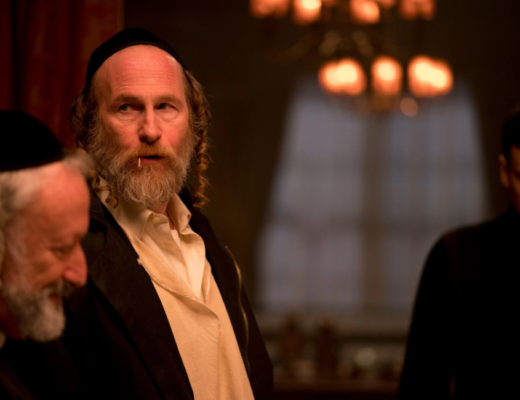In his 1978 book Orientalism, historian and cultural critic Edward Said writes: “Every single empire in its official discourse has said that it is not like all the others, that its circumstances are special, that it has a mission to enlighten, civilize, bring order and democracy, and that it uses force only as a last resort.” It’s a simple enough encapsulation of America’s self-styled national narrative, which since its birth — itself a violent revolt by a gentried, land-owning upper-class — has proclaimed itself a beacon of freedom while working behind the scenes to subjugate as many indigenous peoples and countries as possible. David Cronenberg’s A History of Violence is an embodiment of this inherent contradiction that lives at the dark heart of American exceptionalism, laying bare the might-makes-right justifications of a diseased pseudo-empire. Released in the fall of 2005, following an in-competition premiere at that year’s Cannes Film Festival, A History of Violence was an odd fit for producer New Line Cinema and an even odder fit for a prestige film Oscar campaign; it received generally positive reviews, made a number of year-end “Best of” lists, and did, in fact, garner Oscar nominations (for adapted screenplay and William Hurt’s supporting turn). Despite featuring a newly-minted movie star in Viggo Mortensen (an idiosyncratic character actor coming off the world-beating success of the Lord of the Rings trilogy), it’s remarkable that many considered the film to be Cronenberg’s capitulation to the mainstream, and, in retrospect, it’s no surprise that A History of Violence made a pittance at the box office. Not exactly a straight genre film, despite plenty of action, and not an art film, for the same reason, A History of Violence was, and is, emblematic of the American culture that produced it; that is, it is both horrified of and fascinated by the violent conflict that makes up its own narrative, commenting upon and interrogating itself as it unfolds. Critical luminaries like Jonathan Rosenbaum and Kent Jones were quick to point out this dichotomy, while likening the film to both classic Westerns featuring aged gunslingers as well as more contemporary efforts, like Eastwood’s Unforgiven, where the moral and physical cost of vengeance is placed front and center. In the hands of Cronenberg, a Canadian boasting a cool detachment and penchant for grotesque bodily harm, A History of Violence becomes an outsider’s look at the mythology of America, burrowing into the idea of violence-as-virus, infecting everything it touches, moving through and corrupting both individuals and communities. So no, it’s not an action flick — it’s an exorcism.
It’s a deceptively simple film, and its narrative architecture is easy to synopsize: Tom Stall (Viggo Mortensen) is a small-town family man, proprietor of the local diner, and an all-around upstanding citizen. When some out-of-town toughs attempt to rob him, he dispatches them with ease, garnering media attention as a local celebrity in the process. This, in turn, attracts a couple of gangsters who happen to see Tom on the news. Led by Carl Fogarty (a terrifically creepy Ed Harris, sporting a scarred, disfigured face that becomes one of many symbolic signifiers of the film’s title), they come to town with sinister purpose, confronting Tom’s wife, Edie (Maria Bello), and claiming that Tom is actually Joey Cusack, a gangster from Philly who disappeared years ago and owes a debt to the crime family he abandoned. Much of the film is built on the question of who Mortensen’s character actually is — Stall or Cusack, benevolent husband and father or big city mobster — and Cronenberg’s masterstroke is suggesting that he’s both personas equally and simultaneously. Ultimately, Tom must return to his first “family,” facing up to his past and ridding himself of his brother (the aforementioned William Hurt, hamming it up with malevolent glee). But, like Jeff Goldblum in The Fly, Tom/Joey might find himself transformed into something unrecognizable in the process.
In hindsight, it’s easy to see that this marks a new phase in Cronenberg’s career; if eXistenZ was a sort of punctuating summation of his career up to that point, A History of Violence becomes the first part of a new, rough trilogy, along with Eastern Promises and A Dangerous Method. All three feature Mortensen, of course, and each, in their own way, seeks to recontextualize Cronenberg’s fascination with the body by focusing on interior, psychological spaces — the horror of the mind rather than just of the flesh (all three are key texts of this still-young 21st century). Cronenberg is working in big, broad strokes here, manipulating all-American iconography in his typically clean, precise style. After Tom has finished his bloody task, destroying one family to save the other, he washes himself clean in a symbolic baptism and returns home to his wife and children. They’re seated at the dinner table, with an empty chair waiting for him. He has rechristened himself, but is that enough to erase such psychic scars? It’s a profoundly ambivalent ending; Walter Chaw suggests that “the true aftershocks of A History of Violence aren’t that things will never be the same, but the infinitely more troubling possibility that things may never have been — and, indeed, can never be — any different.” This ellipses of an ending is suitably affecting on a human/character level, but likewise extends to the cultural, and in perusing contemporaneous reviews of A History of Violence, it’s surprising that none seem to link the film directly to post-9/11 America or our misadventures in Afghanistan and Iraq. Of course, few could have imagined that we’d still be involved in these forever wars 15 years later; the 2003 torture of detainees at Abu Ghraib was still in the news, and the massacre of Iraqi citizens by Blackwater mercenaries was only a couple of years away. What Cronenberg seems to be equating, then, is the ability to compartmentalize what lies at the heart of the traditional patriarchal family with an entire country’s ability to compartmentalize its own horrific actions in the name of freedom. Ultimately, pace Said, Tom gets to return to his family because the violence he has enacted is the “right” (read: American) kind of violence. As journalist Fabiola Cineas writes, “America’s record in addressing its deep moral failures is sullied by amnesia, centuries of pain and truth locked away.” As we embark on an already-turbulent new decade, we’d do well to remember the history that allowed the last 4 years to happen, lest we be doomed to repeat it.
Part of Kicking the Canon – The Film Canon.







